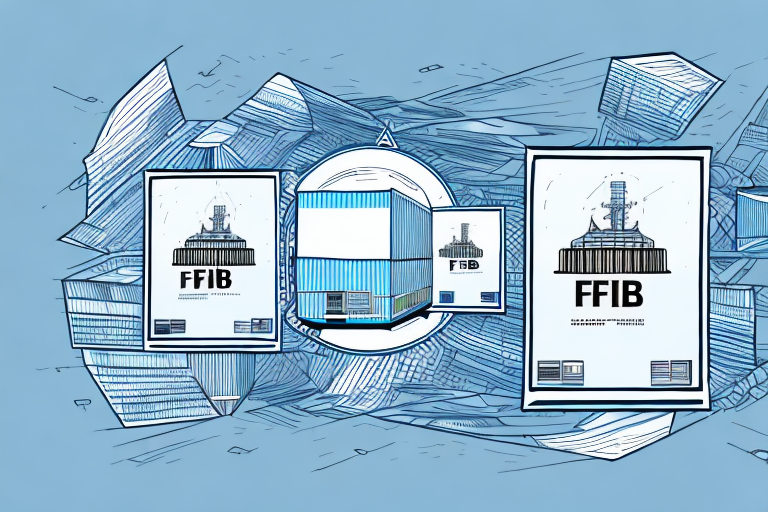Understanding FOB Shipping Point
For business owners dealing with product sales, comprehending shipping terms like FOB Shipping Point is essential for efficient operations and accurate accounting. FOB Shipping Point, which stands for "Free on Board Shipping Point," delineates when the responsibility and ownership of goods transfer from the seller to the buyer during the shipping process.
Definition of FOB Shipping Point
FOB Shipping Point is a shipping and accounting term that specifies the moment ownership of goods shifts from the seller to the buyer. Under FOB Shipping Point terms, the buyer assumes responsibility for the goods as soon as they are loaded onto the carrier. This includes any risks of damage or loss during transit.
FOB Shipping Point vs. FOB Destination
Understanding the distinction between FOB Shipping Point and FOB Destination is crucial:
- FOB Shipping Point: Ownership transfers when goods are shipped. The buyer handles transportation costs and assumes risk during transit.
- FOB Destination: Ownership remains with the seller until goods arrive at the buyer's location. The seller bears transportation costs and risk during transit.
Choosing the appropriate FOB term can significantly impact your accounting records and financial responsibilities.
Accounting Implications of FOB Shipping Point
How FOB Shipping Point Accounting Works
In FOB Shipping Point accounting, the seller records the sale once the goods are shipped, recognizing revenue and reducing inventory accordingly. The buyer records the purchase and includes the inventory only upon receipt of the goods. This ensures that neither party overstates nor understates their financial statements.
Calculating Shipping Costs
Under FOB Shipping Point, the buyer is responsible for all shipping-related expenses. This includes freight charges, insurance, and any applicable duties or taxes. Businesses should accurately calculate these costs to determine the total expense associated with the purchased goods.
- Freight Charges: Costs associated with transporting goods from the seller to the buyer.
- Insurance: Coverage for potential damage or loss during transit.
- Duties and Taxes: Import or export fees applicable to the shipment.
Revenue Recognition
Revenue should be recognized at the point of shipment under FOB Shipping Point terms. This aligns with the transfer of ownership and ensures that revenue is accurately reflected in the seller's financial statements upon dispatching the goods.
Benefits of FOB Shipping Point Accounting
Accurate Revenue and Inventory Management
FOB Shipping Point accounting allows for timely and precise recording of revenue and inventory levels. Sellers can recognize sales immediately upon shipment, enhancing cash flow management and financial reporting accuracy.
Risk Mitigation and Dispute Reduction
By clearly defining the transfer of responsibility at the shipping point, FOB Shipping Point reduces potential disputes between buyers and sellers regarding damage or loss during transit. This clarity helps in assigning accountability and managing risks effectively.
Enhanced Supply Chain Efficiency
Implementing FOB Shipping Point can streamline supply chain operations by providing better visibility into inventory levels and shipping processes. This enables businesses to optimize stock management, reduce stockouts, and improve overall operational efficiency.
Common Mistakes and Best Practices
Common Mistakes to Avoid
- Inaccurate Record-Keeping: Failing to maintain precise records of shipping costs can lead to financial discrepancies.
- Poor Documentation: Not clearly documenting the transfer of ownership can result in disputes over damaged or lost goods.
- Misclassification of Terms: Incorrectly applying FOB terms can distort financial statements and lead to compliance issues.
Best Practices for Implementation
- Clear Contract Terms: Ensure that FOB terms are explicitly stated in all sales contracts to avoid ambiguity.
- Accurate Documentation: Maintain detailed records of shipping transactions, including invoices, bills of lading, and insurance documents.
- Utilize Technology: Implement accounting software and transportation management systems (TMS) to automate and streamline record-keeping.
Role of Technology in FOB Shipping Point Accounting
Automating Record-Keeping and Shipment Tracking
Technological advancements play a pivotal role in enhancing FOB Shipping Point accounting. Tools such as Transport Management Systems (TMS) and Enterprise Resource Planning (ERP) software automate record-keeping, track shipments in real-time, and integrate financial data seamlessly.
Future Trends and Outlook
The integration of artificial intelligence and machine learning in supply chain management is expected to further optimize FOB Shipping Point accounting. These technologies can predict shipping delays, optimize routing, and provide deeper insights into shipping costs, enabling businesses to make more informed decisions.
According to a PwC report, leveraging advanced technology in shipping and accounting processes can lead to significant cost savings and operational efficiencies.
Industries Benefiting from FOB Shipping Point Accounting
Manufacturing
Manufacturers benefit from FOB Shipping Point by gaining better control over their supply chain and inventory management. This facilitates timely production planning and reduces the risk of stockouts.
Retail and Wholesale
Retailers and wholesalers use FOB Shipping Point to manage their inventory more effectively, ensuring that products are available for customers without overstocking.
Food and Beverage
In the food and beverage industry, FOB Shipping Point helps ensure the timely delivery of perishable goods, maintaining product quality and freshness upon arrival.
Construction
Construction companies rely on FOB Shipping Point to manage the logistics of transporting heavy and bulky materials, allowing for better budgeting and project planning.
Conclusion
Understanding and effectively implementing FOB Shipping Point accounting is vital for businesses involved in shipping products. It ensures accurate financial records, reduces disputes, and enhances supply chain efficiency. By adhering to best practices and leveraging technology, businesses can optimize their shipping operations and maintain a competitive edge in the market.
For comprehensive guidance on shipping terms and accounting practices, refer to authoritative sources such as Investopedia and industry-specific reports from PwC.






















